In Khmer Angkor Wat means ” Temple City” or ” City of Temples “.
The first thing that hit me was its enormous size. You can see how big the temple is from this areal photo below.
The second thing that impressed me was that Angkor Wat was built in the XII century BY HAND with no power tools and still the temple was completed in only 37 year!!! Just the moat which is 1.5 km by 1.3 km I think would take that long to build by hand! And the sandstone blocks used were quarried from the sacred mountain of Mt Kulen, 50 km away from the building site! To get there, they were put on wooden rafts and floated down the Seim Reap river or were dragged by Elephants through the jungle. Building Angkor Wat took 300,000 workers and 6000 Elephants and it was still was not fully completed!!!
This monumental eight-arm Vishnu located just inside the western gate is still worshipped by visiting Cambodians. The head of this statue had been stolen and was recovered in 2003 in Bangkok’s history museum. The Western gate’s main doorway has beautiful carvings of Apsaras – a female spirit of the clouds and waters in Hindu and Buddhist mythology.
The third thing that impressed me was how detailed the stone and wood carvings were.They covered all four of the endless walls of the gallery and told stories of legends! There were beautiful carvings on every column as well.
Imagine the gallery above with a ceiling just like the one in the picture below, but carved out of solid wood. This was how the ceilings looked like throughout the whole Angkor Wat. The doors between spaces were also carved out of the same wood.
The carvings in the gallery above were a praise for the king Suryavaman II who decided and ordered Angkor Wat built. They were so detailed I could have spent all day just staring at them. A carving that really interested me was the carving of the Gods and Demons holding Naga, the seven headed snake, turning it around the sacred mountain so the mountain would fall into the Ocean and reveal the holy water. When the holy water was taken all the Gods lined up to drink and live forever. A smart demon disguised himself as a god to stand in the line to drink, but the Sun told Vishnu of the disguised Demon so Vishnu threw a disc through him. It was though too late and the demon still lived but cut in half. He was angry with the sun so every year he engulfed it, but the sun came straight through his tummy. That’s how the Ancient civilization of the Khmer people explained the Solar Eclipse.
The carvings below were from the war between monkey soldiers and demons.
Like the other temple-mountains of Angkor, Angkor Wat also replicates the spatial universe in miniature. It is made of three levels each rising above the other, creating the impression of mountains leading to Heaven. The central tower is Mt Meru, with its surrounding smaller peaks, bounded in turn by continents (the lower courtyards) and the oceans (the moat). The seven-headed naga at the entry becomes a symbolic rainbow bridge for man to reach the abode of the gods.
The first level Holds the Gallery with all the carving of Hindu legends, the second level holds two soul purification pools that are for civilians and the thirds level holds the soul purification pool reserved only for the Royal Family. This is the stair leading to the Third level. We couldn’t visit because it was a special Buddhist holiday.
Lining Angkor Wat were enormous trees that created a nice place to rest from the heat. They were not native to Cambodia. The French brought them in from Europe for shade while they were working on the conservation of the temples.
Everywhere around the temple there were little girls relentlessly trying to sell little trinkets to us.
In general there was a lot of activity around the temple grounds! People were selling everything! This woman was selling a typical Khmer snack of little shells. The bamboo in the basket on the other bike was full of sticky rice cooked with coconut milk and beans. You had to peel back the bamboo to get to the rice. My sister really likeed the bamboo rice.
After visiting I now know why Angkor Wat was named the seventh ancient wonder of the world!
I was fully impressed by it’s sheer size, how in such a small period of time it was built, how people built it by hand with the help of elephants and how well the temple has preserved after over 1,000 years even though the history of Cambodia had been tough to say the least.

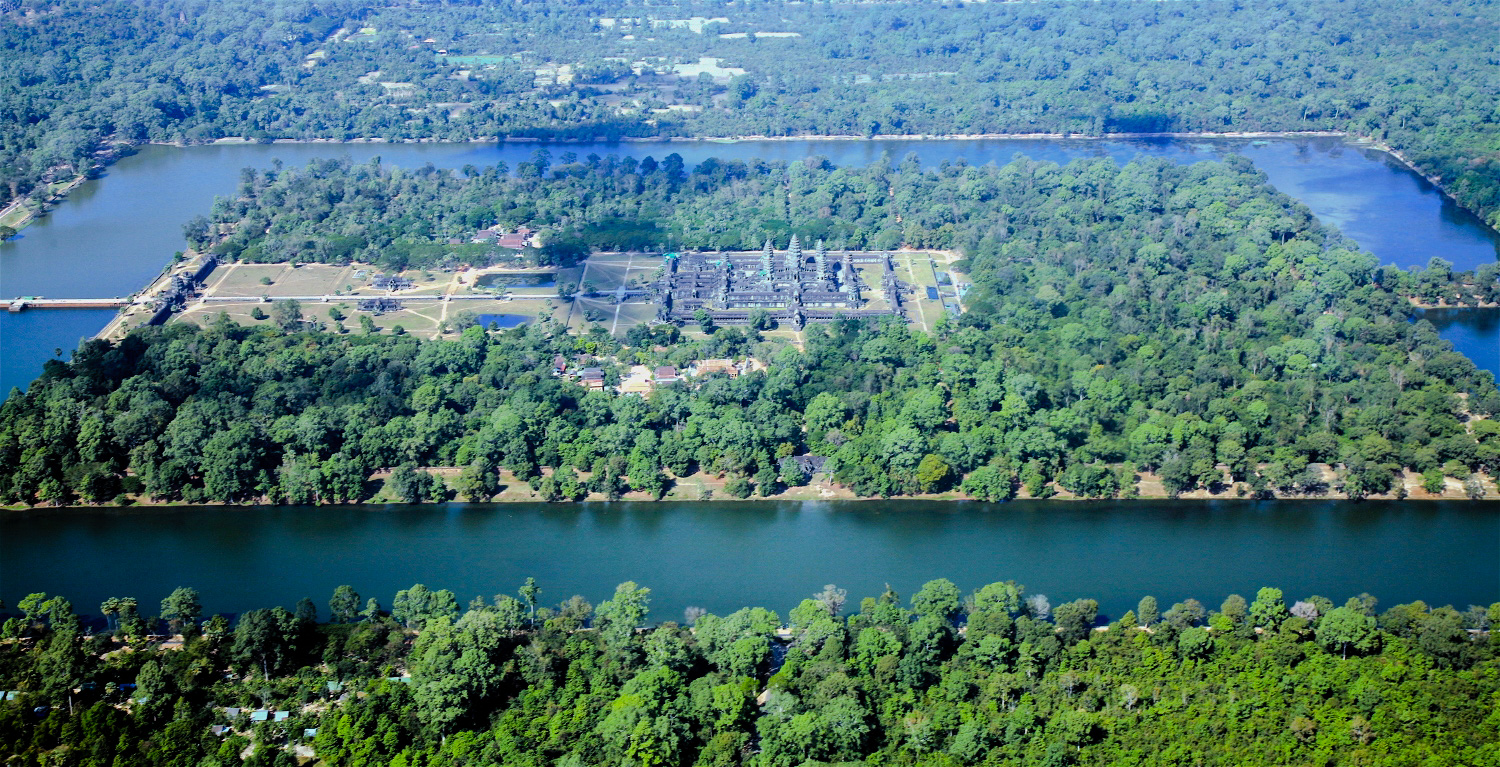
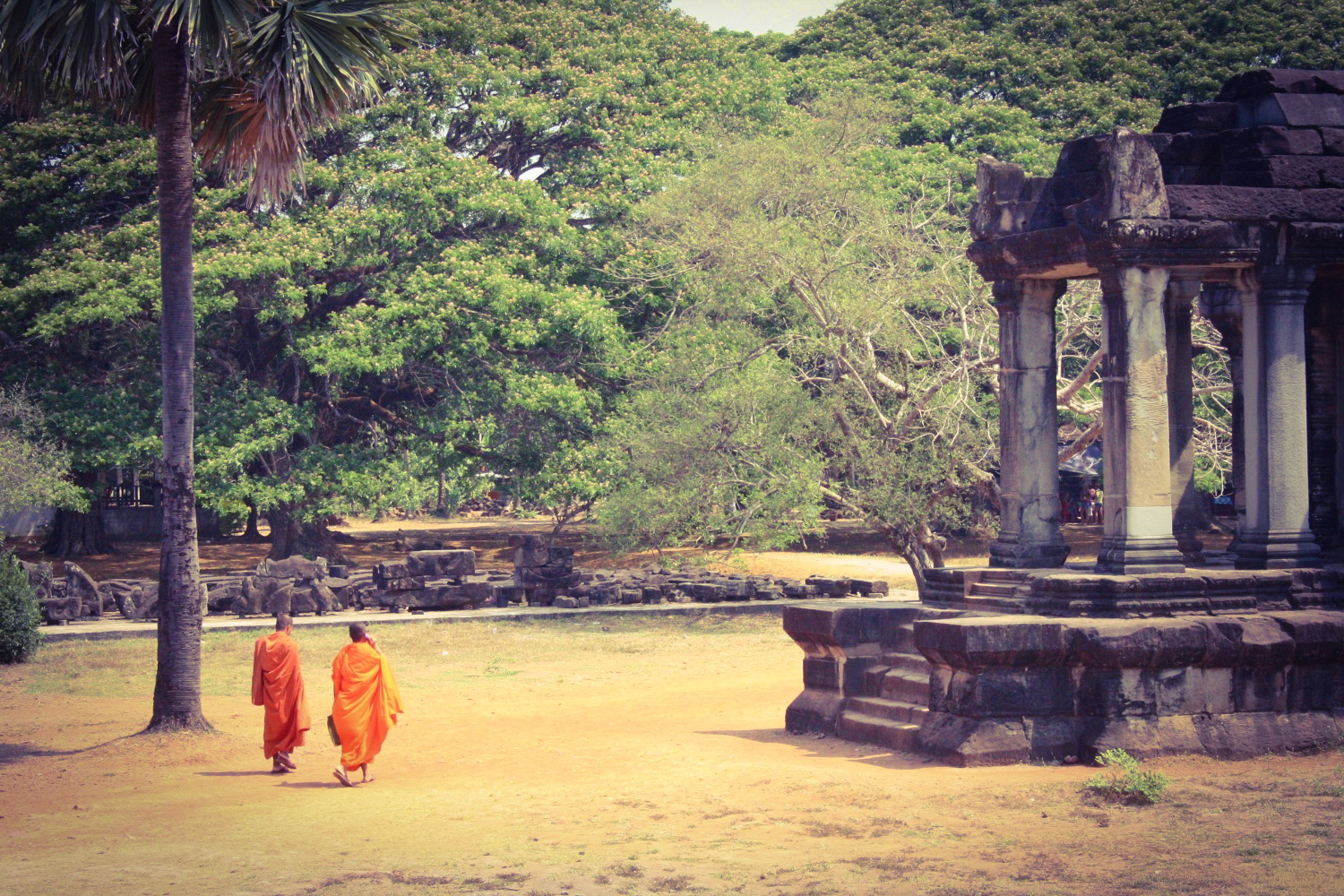
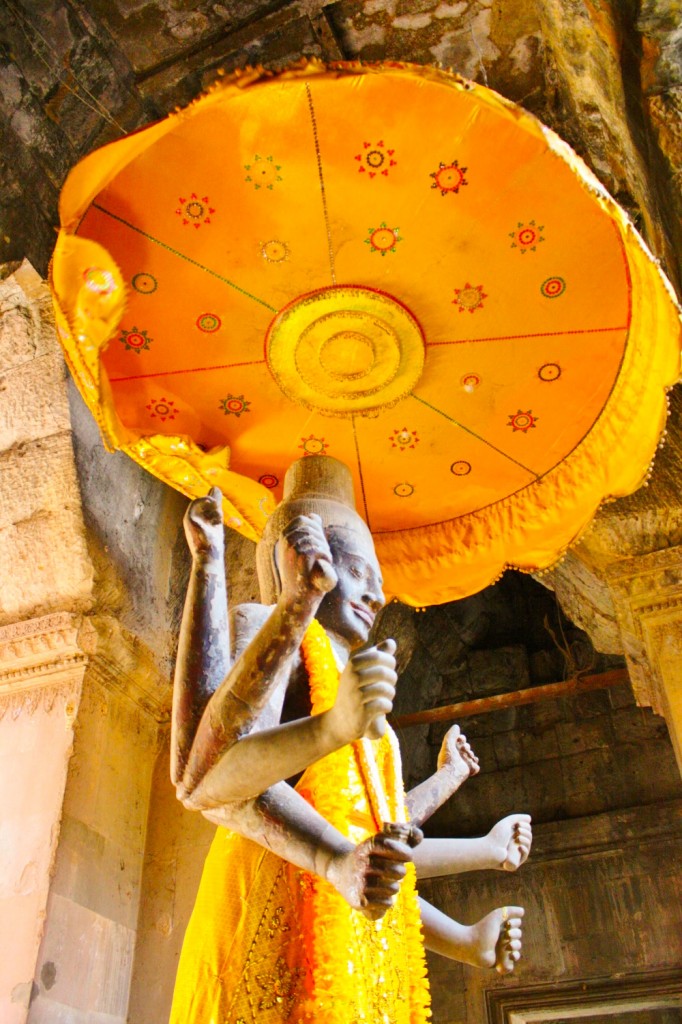
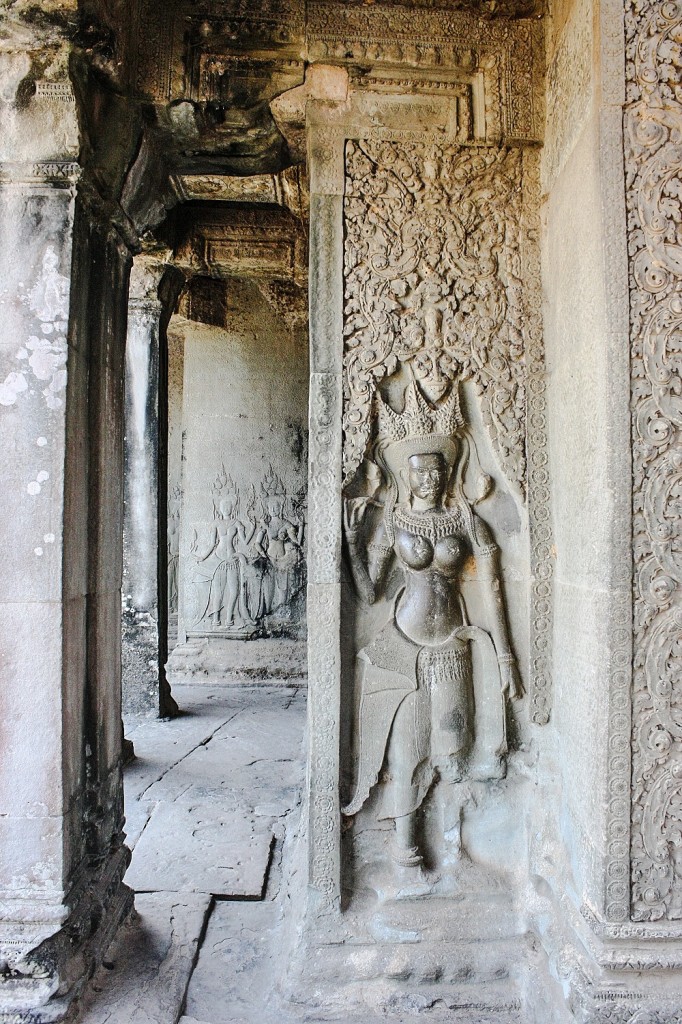
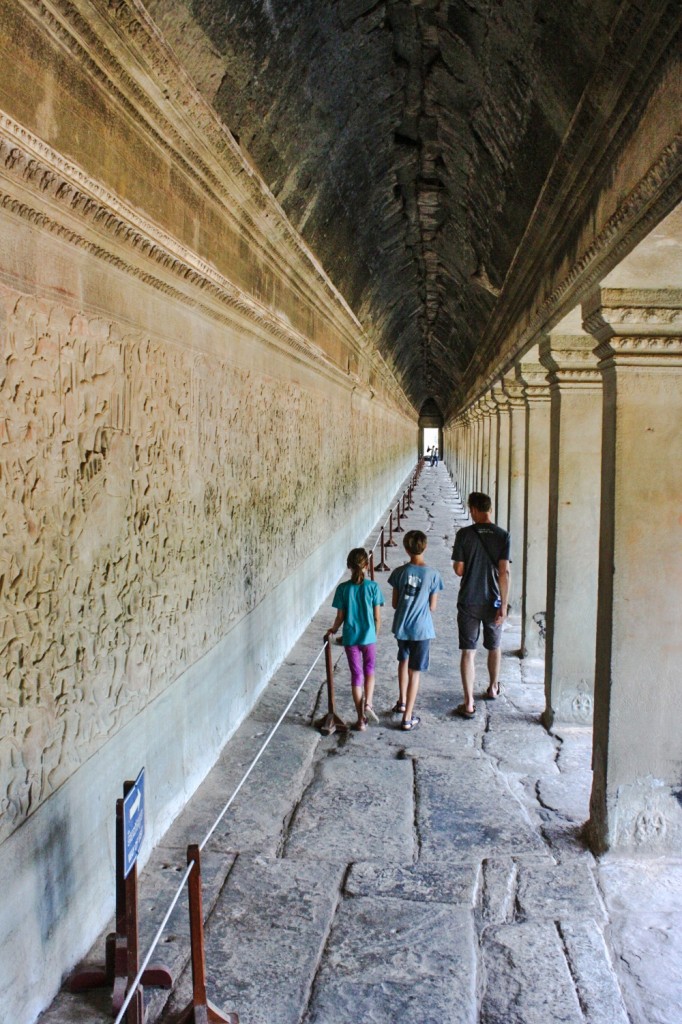
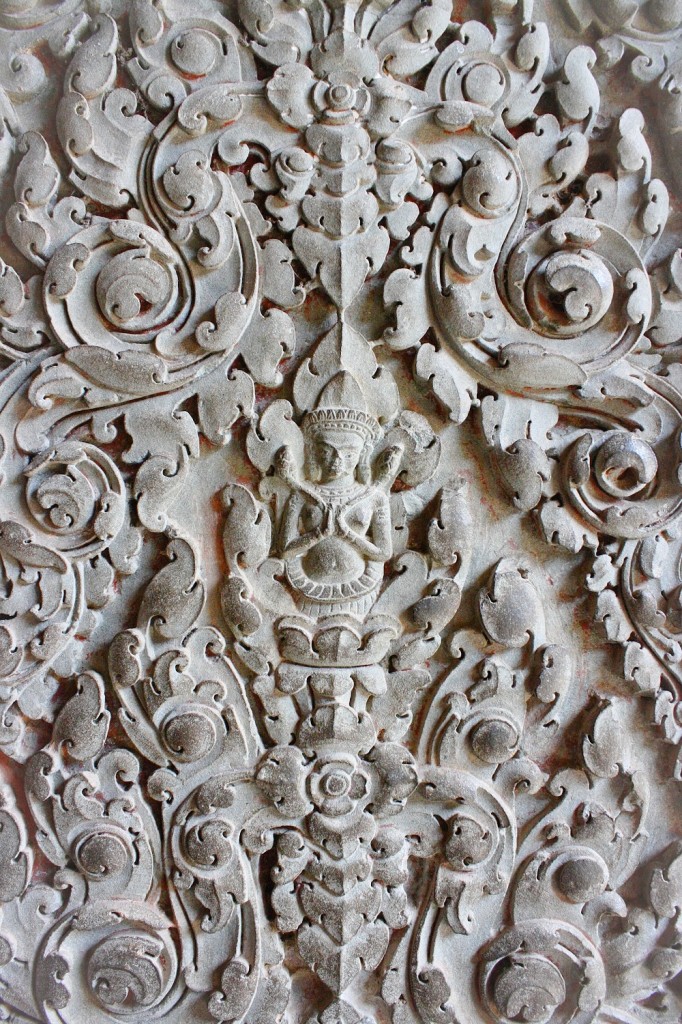
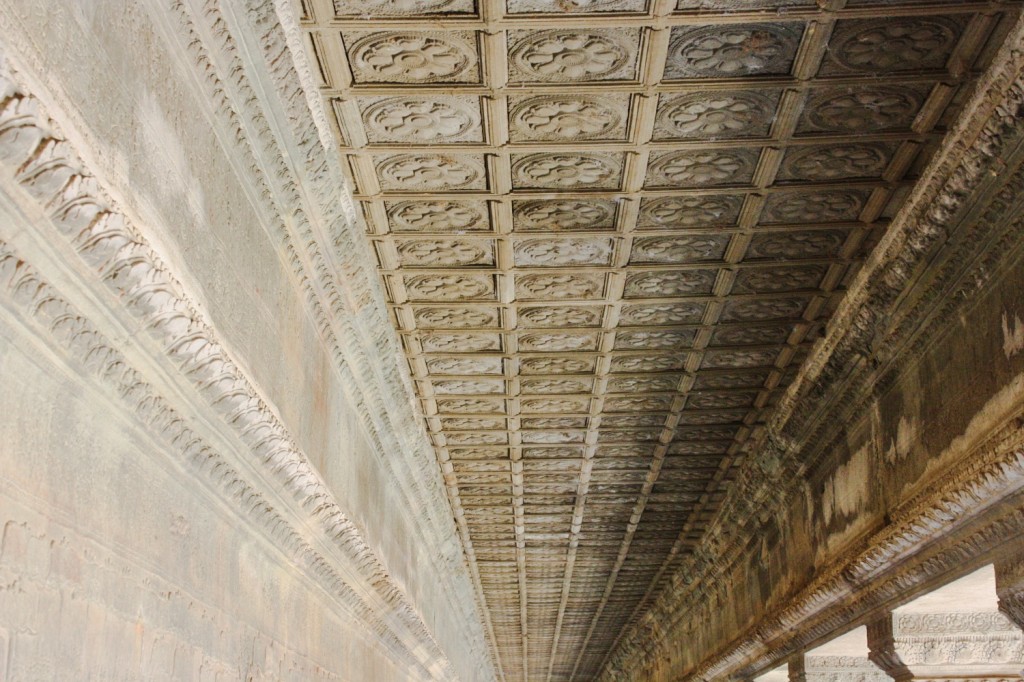
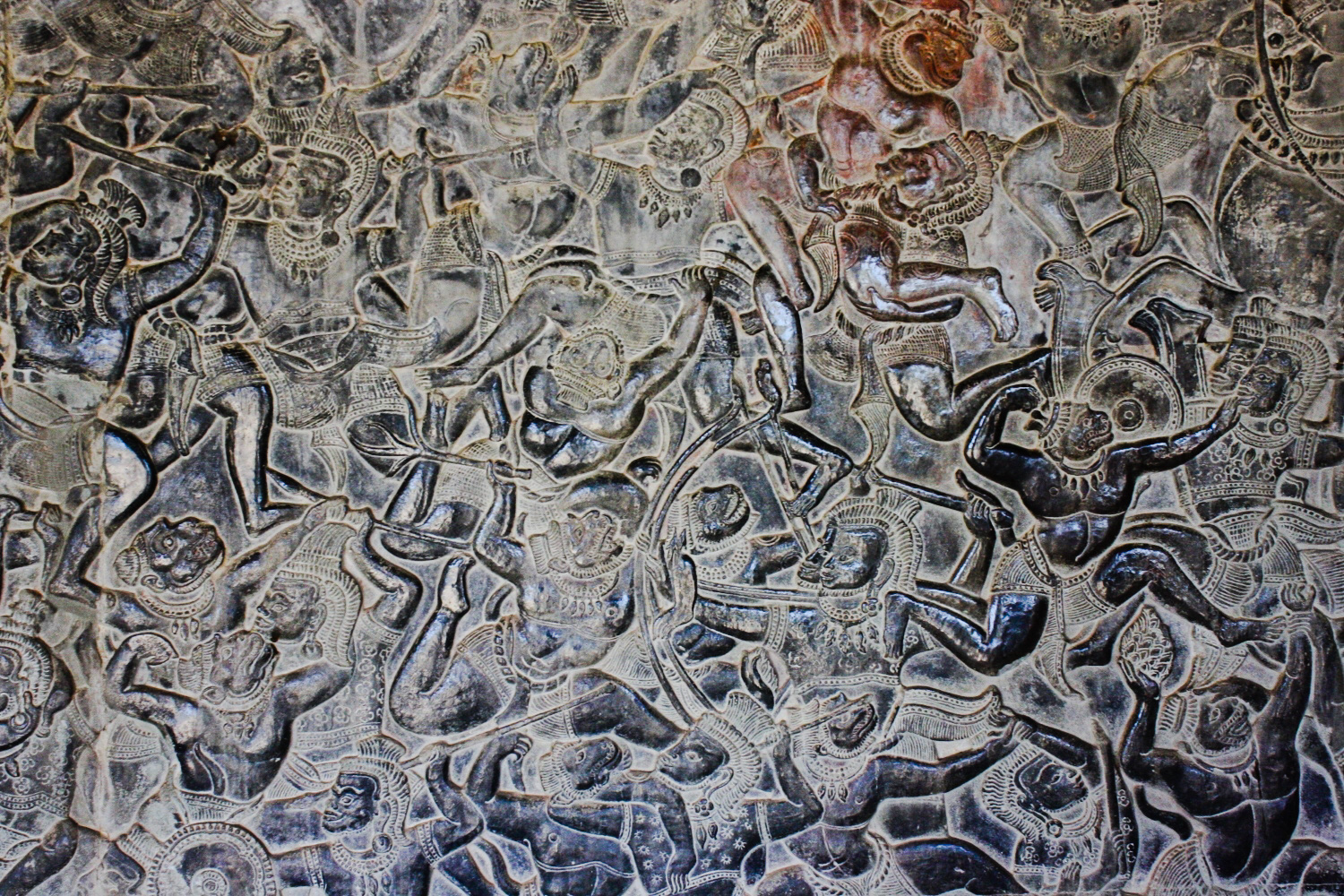
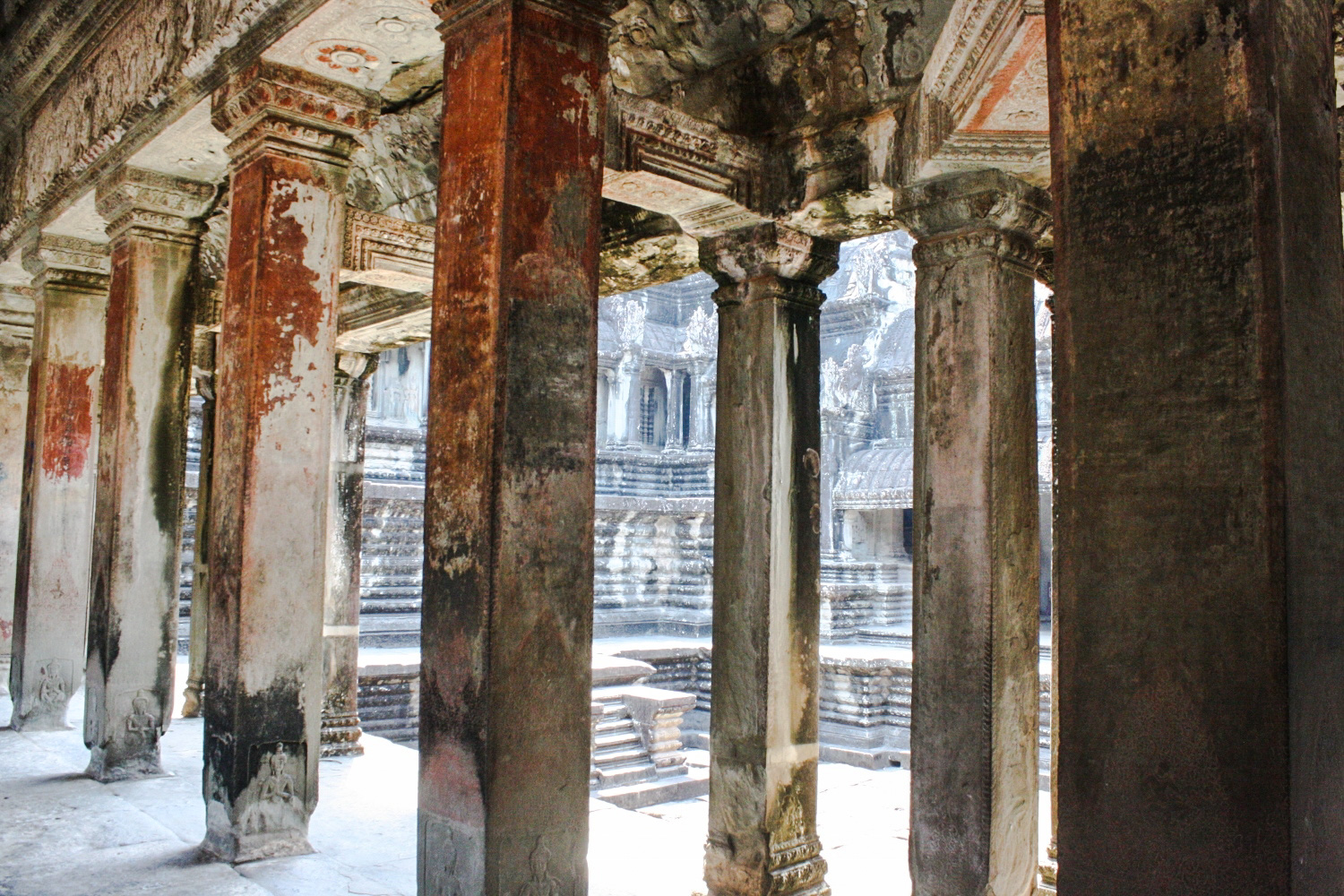
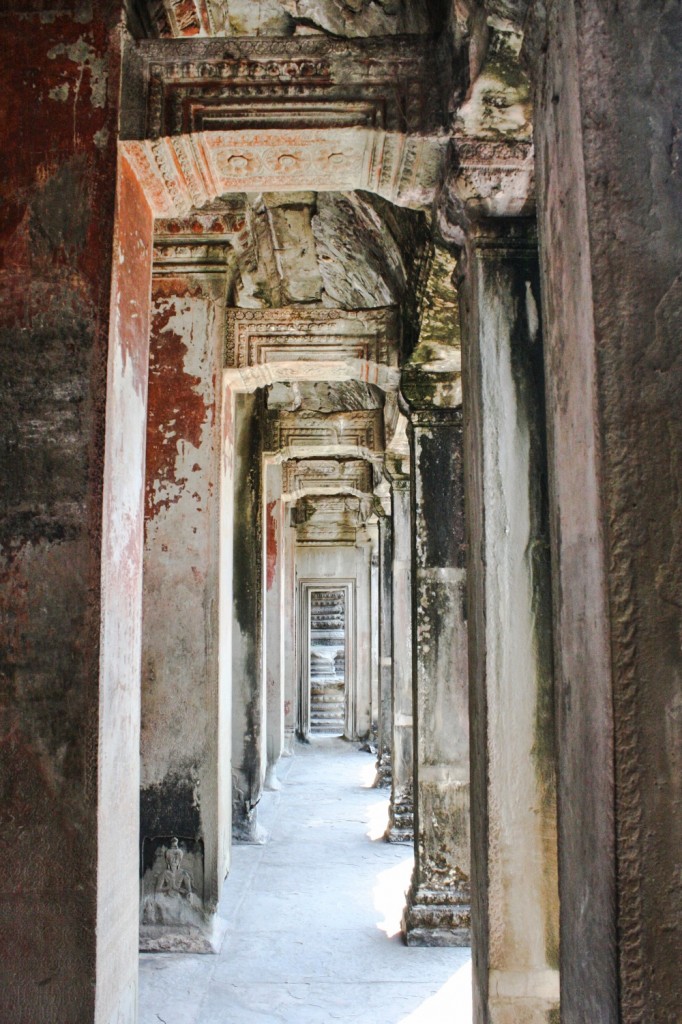
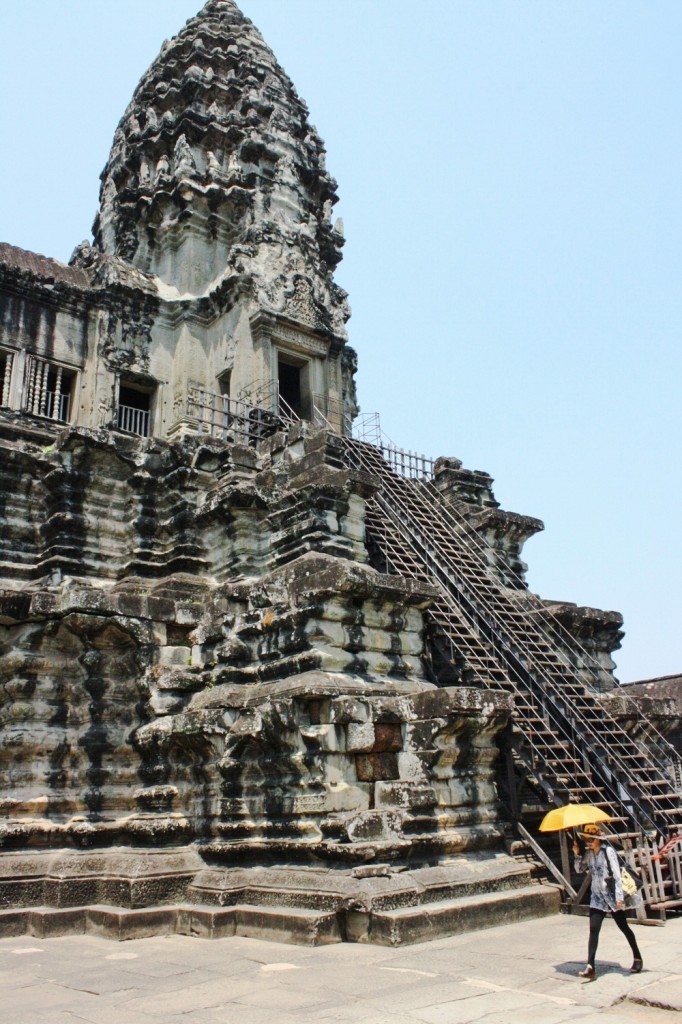
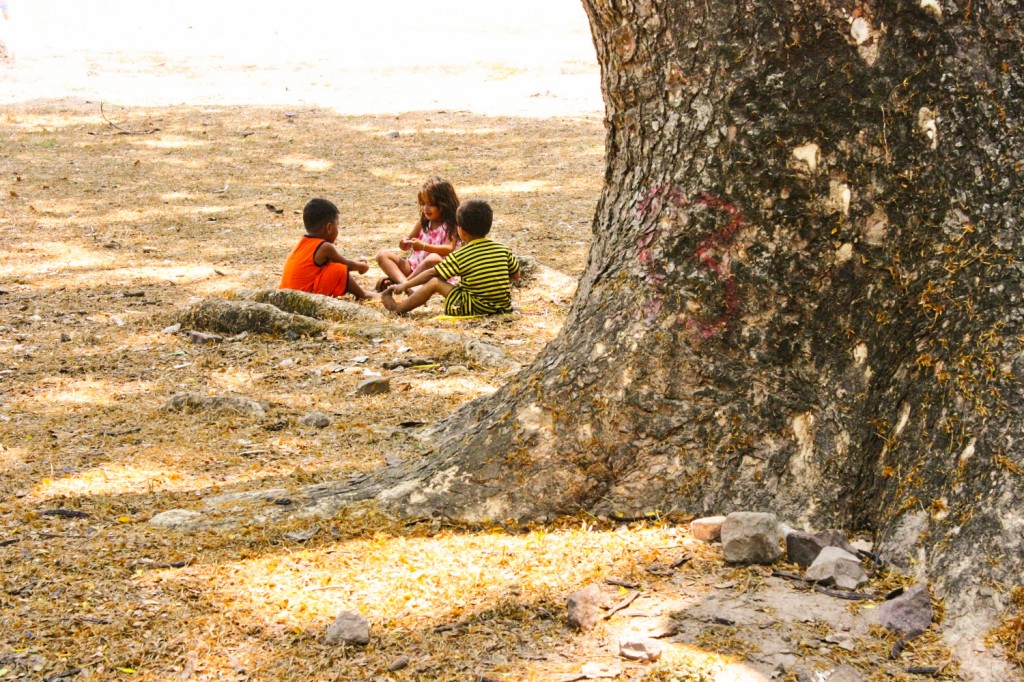
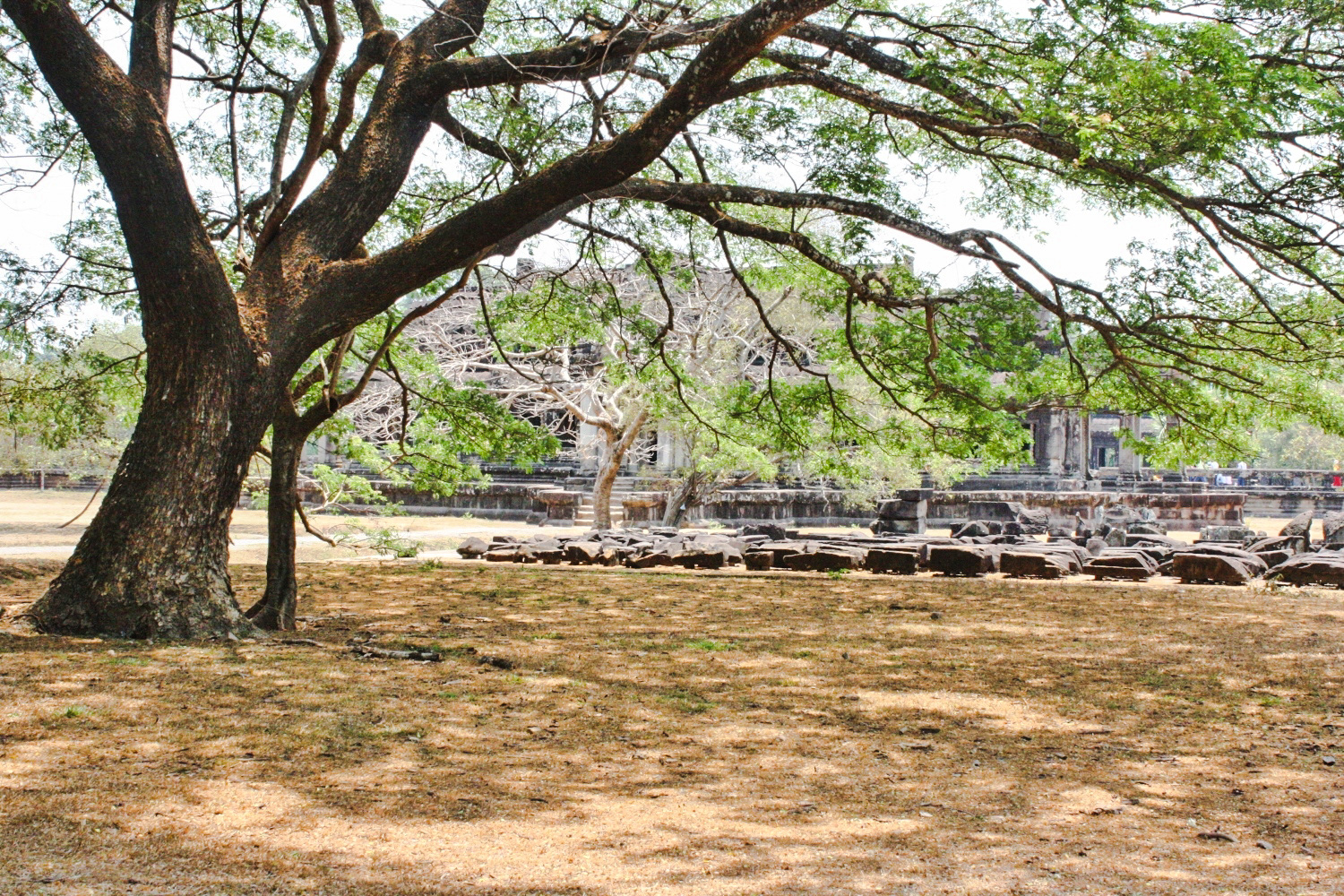

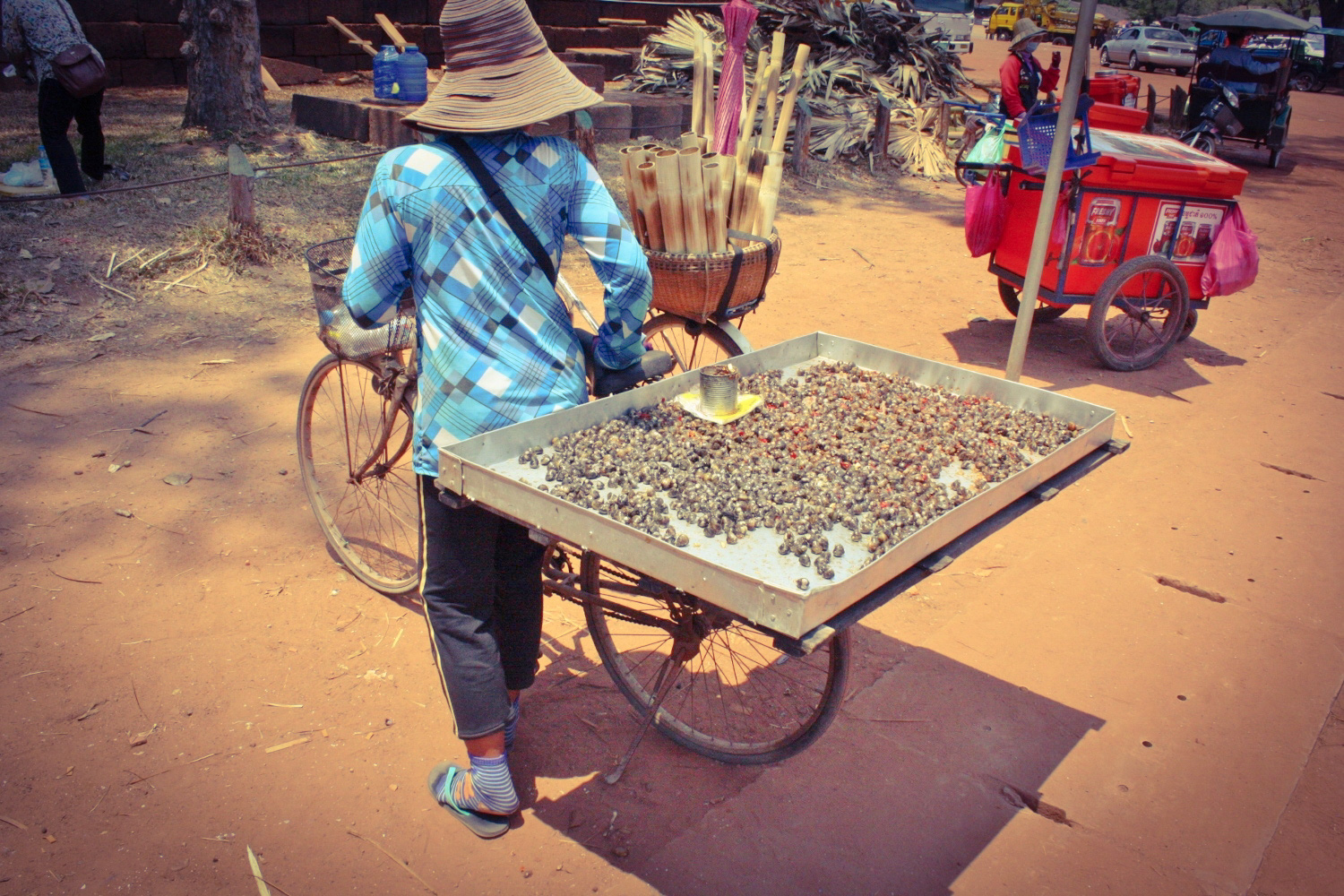
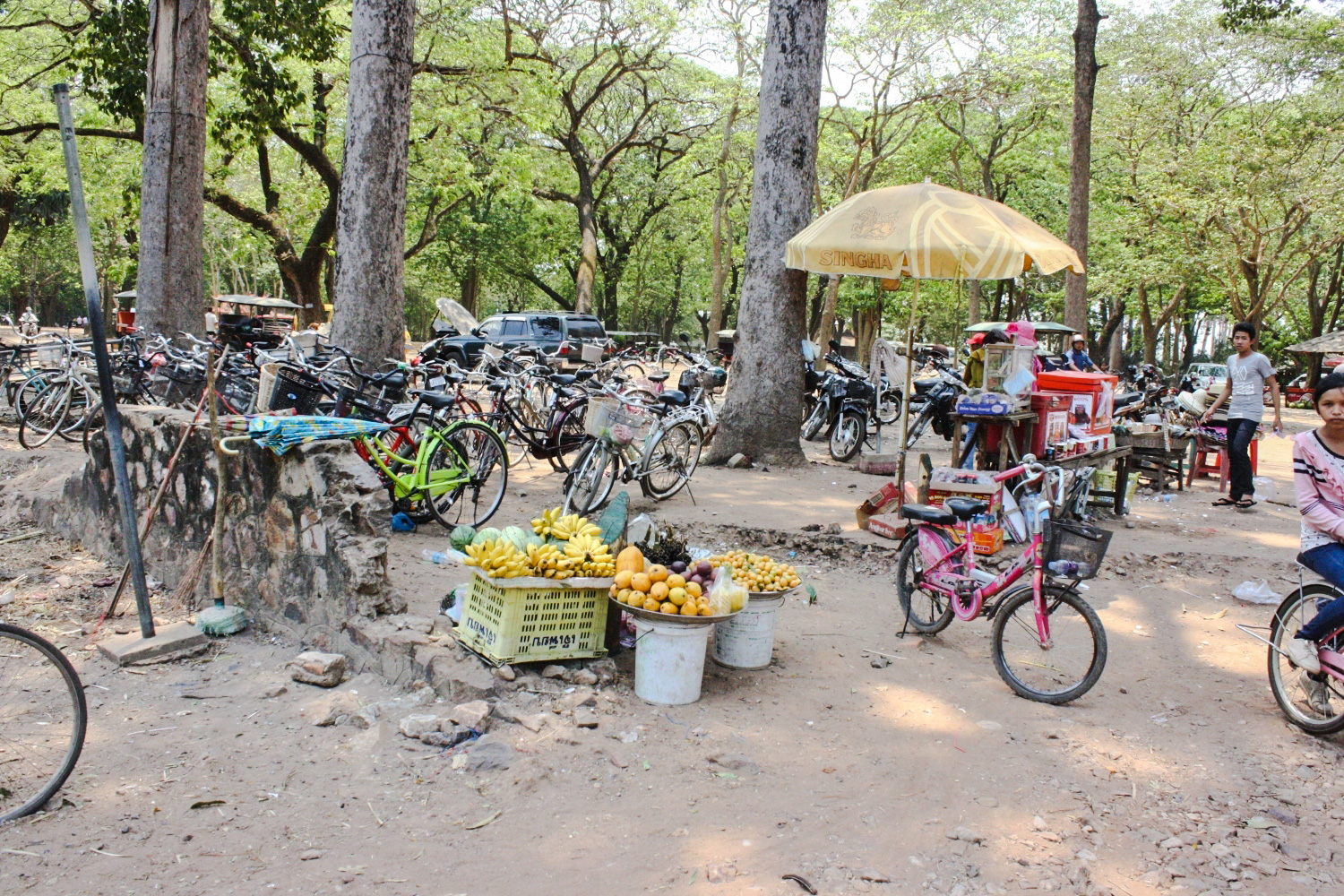
Борян, наистина невероятно! Погледът ти е уловил всичко, а пътеписът е впечатляващ! Снимките са великолепни!
Благодаря!